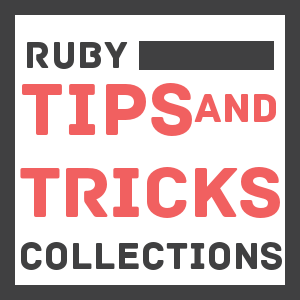I first heard of Sinatra a couple of years ago and have been in love with it ever since. For those who haven’t heard of it, Sinatra is a DSL that is used to create web applications. It is written in Ruby and was originally designed by Blake Mizerany, but there’s now a core team who maintain and develop the code. In case you were wondering, it is named after Frank Sinatra, apparently for having
so much class he deserves a web-framework named after him.Here’s seven reasons why I love Sinatra so much:
Simplicity
You can create a fully functional web app using Sinatra in just one file. There are no complicated set up procedures, configuration, or generators to worry about: You can just open up a text editor and start hacking away. Routes are simple to implement and have a great syntax that uses all of the Http verbs GET,POST,PUT and DELETE; making it a cinch to create RESTful applications. Simplified, Sinatra lets you write simple yet elegant code that produces amazing results.Flexibility
Sinatra can be used to build anything from the smallest of microsites to a full-scale web application. It’s the perfect choice for API implementations, Middleware, widgets, Facebook apps as well as many others. I often use it to just try out new ideas or prototype a website quickly. Sinatra is built on top of Rack, making it easy to extend using Ruby Gems, Rack-Middleware and its own extension API. This opens up a world of possibilities for extending your application and avoids you having to reinvent the wheel.It’s Lightweight
There’s not much in the way of wasted code – basically there is enough to get you going and not much more. This means that it doesn’t have all the bells and whistles that Rails and other frameworks have in terms of helper functions and generator scripts, but it also doesn’t tie you to doing things in a certain way, making it ultra-flexible. When you write an app in Sinatra there will be no wasted features or unused functions, meaning it uses less memory and runs quicker.Unbiased
You don’t have to use the MVC paradigm and you’re not tied to any particular ORM (Active Record, Sequel, Mongoid etc), JavaScript framework (JQuery, MooTools,YUI etc) or Templating system (Haml, ERB , Slim etc). This puts you, the developer, back in the driving seat, giving you full control over how to best implement your application. This can make Sinatra development seem like the Wild West at times and of course can lead to some bad code … but hey, at least it’s your bad code!It Helps Increase Your Ruby Proficiency
Everything in Sinatra is just Ruby code, so you get lots of practice while coding up your app. Because there is less ‘magic’ going on in the background, you often have to figure out how to implement certain types of functionality yourself. This isn’t necessarily a bad thing – there’s always someone ready to help (see point 6). And Sinatra doesn’t have it’s own ‘coding style’ like Rails does, things are very much more in the traditional Ruby style. Sinatra’s source code weighs in at just over 1500 lines of well documented code, which means that you can easily read through it yourself. It is clear, concise and contains some great examples of good Ruby programming practice.The Community is Amazing
Sinatra has a friendly and vibrant community who are always happy to help out. The docs on the official website are also of great value. If you are stuck you can always head over to the Google Group or find somebody on the irc channel (#sinatrarb).It’s fun!
This is the most important point – Sinatra lets me simply enjoy playing around with code. I can quickly try out new ideas or experiment with different methodologies without any major overhead. I don’t have to follow any guidelines or rules and can just go my own way and get something running in no time at all then enjoy hacking away at it for the rest of the day!Your First Date With Sinatra
All you need to do is install the Sinatra gem: $> gem install sinatra
require "sinatra"
get("/") { "Hello World!" }
$> ruby hello_world.rb Frequently Asked Questions about Sinatra
What is Sinatra and how does it differ from other Ruby frameworks?
Sinatra is a Domain Specific Language (DSL) for quickly creating web applications in Ruby. Unlike other Ruby frameworks like Rails, Sinatra is minimalistic and flexible. It doesn’t follow the typical Model-View-Controller (MVC) pattern, instead, it allows developers to take a more direct approach to handle routes and views. This makes Sinatra a great choice for small applications, APIs, and quick prototypes.
How do I get started with Sinatra?
To get started with Sinatra, you first need to install the Sinatra gem. You can do this by running the command gem install sinatra in your terminal. Once installed, you can create a new Ruby file and require Sinatra at the top. From there, you can define routes and start your server using the ruby filename.rb command.
What are the main features of Sinatra?
Sinatra is known for its simplicity and flexibility. It has a straightforward syntax for defining routes, supports multiple types of responses (HTML, JSON, XML), and allows for easy integration with databases and other services. It also supports middleware, which allows you to add functionality to your application in a modular way.
How does Sinatra handle routing?
In Sinatra, routes are defined with a simple syntax. You specify the HTTP method (GET, POST, etc.), the URL pattern, and a block of code to execute when the route is matched. This makes it easy to understand what each route does and how it responds to different types of requests.
Can I use Sinatra for large-scale applications?
While Sinatra is often used for small applications and APIs, it can also be used for larger projects. However, as your application grows, you may need to add more structure and organization to keep your code maintainable. This can involve using Sinatra’s modular style, splitting your code into multiple files, or even using other libraries or frameworks in conjunction with Sinatra.
How does Sinatra compare to Rails?
Sinatra and Rails are both Ruby frameworks, but they have different philosophies. Rails is a full-featured framework that follows the MVC pattern and includes many built-in tools and conventions. Sinatra, on the other hand, is minimalistic and flexible, giving you more control over your application structure and behavior. The best choice depends on your specific needs and preferences.
Can I use Sinatra with a database?
Yes, you can use Sinatra with a database. Sinatra doesn’t include built-in support for databases, but it’s easy to integrate with libraries like ActiveRecord or Sequel. This allows you to perform database operations in your routes and views.
How can I handle errors in Sinatra?
Sinatra provides several ways to handle errors. You can define custom error pages, use the halt method to stop processing a request and return a specific response, or use the error method to define a block of code to run when a specific type of error occurs.
Can I use Sinatra to build a RESTful API?
Yes, Sinatra is a great choice for building RESTful APIs. Its simple routing syntax makes it easy to define the necessary endpoints, and it supports multiple response formats, including JSON.
How can I test my Sinatra application?
Sinatra applications can be tested using a variety of tools. Sinatra itself includes a test helper for use with the Test::Unit framework, and it’s also compatible with other testing libraries like RSpec and Minitest. These tools allow you to write tests for your routes, views, and other parts of your application.
Darren loves building web apps and coding in JavaScript, Haskell and Ruby. He is the author of Learn to Code using JavaScript, JavaScript: Novice to Ninja and Jump Start Sinatra.He is also the creator of Nanny State, a tiny alternative to React. He can be found on Twitter @daz4126.


